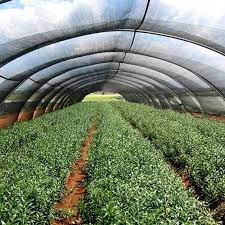
Shade Nets In Kenya
As the top among all shade net suppliers in Kenya, Grekkon Limited’s shade nets in Kenya are of different types and color. We have all types of shade nets for agriculture, for the production of both food, and none food crops. The cost price of a shade net roll is from Kes 12,500. Below, we answer commonly asked questions
1. What are shade nets?
They are HDPE, UV treated woven or knitted netting material that regulate the amount of light and heat from the sun, air and moisture. Shade nets reduce the temperature delta (difference between day and night temperatures), thereby avoiding a sudden temperature variation, so that plants don’t suffer from thermal shock A good degree of beneficial moisture is trapped between the ground and the net. They are water permeable so that rain water, and irrigation water will reach the crop and keep it hydrated
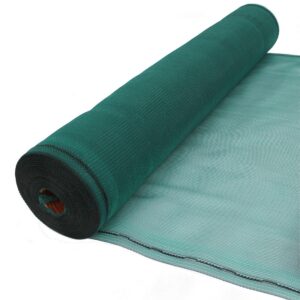
A knitted green shade net roll
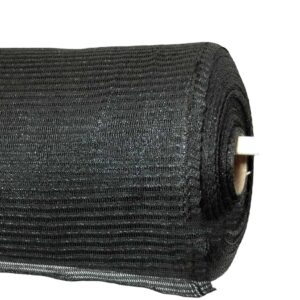
A knitted black shade net roll
2. What are shade nets used for?
- In the nursery to protect seedlings from direct radiation, and harden seedlings
- In orchards and farms to protect crops from intense sunlight as well as bird and insect pests
- Shade net fencing. On a fence to block excessive wind on the crop, and to reduce the farm’s view from outside
- To cover water reservoirs or water tanks so as to reduce water loss by evaporation
- In livestock production to protect them against extreme heat
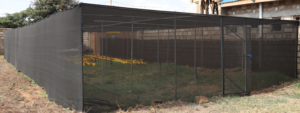
3. How much do shade nets cost in Kenya?
Tabulated below are our shade net prices in Kenya are per meters squared, by type
| % Shade | Cost per M Sq In Kes |
| 30% | 70 |
| 55% | 75 |
| 75% | 100 |
| 90% | 170 |
Grekkon Limited’s shade nets are available as 50M x 4M rolls in all our branches country wide
4. What is the cost of shade net per acre?
Our shade nets for sale in Kenya by per acre are measured as 4,100M sq
| % Shade | Cost per Acre In Kes |
| 30% | 295,200 |
| 55% | 352,600 |
| 75% | 410,000 |
| 90% | 697,000 |
5. What are the types of shade nets?
By material
- Woven shade nets. They are made from polypropylene, are heavier and allow heat build up. They withstand the most extreme exposure to the sun, and have minimum shrinkage. Woven shade nets are for shading of plants, pet kennels, windscreens, patios and for privacy. Woven shade nets are 30% heavier than knitted shade nets, and are difficult to install
- Knitted shade nets. They are made up lightweight polyethylene. They have an open lock-stitch design that resists wind damage, and reduces heat build up in the net. The level of shrinkage is 2% to 3%. Knitted shade nets have better longevity in agricultural use as they resist agro-chemicals and detergents. They are preferred for shade houses, and greenhouses.
Grekkon Limited’s shade nets are all knitted with monofilament fabric which is durable due to he thicker thread. A thicker thread has a longer process of photo oxidation as compared to a thinner thread, hence the longer lifespan

By % shade
- 90% shade nets are appropriate for crop nurseries located in low altitude or extremely hot locations
- 75% shade nets are preferred for nurseries in high to mid altitude locations that are also hot. They are also used in the hardening stage of seedlings in hot low altitudes. This will grow ferns, orchids and succulents
- 55% shade nets are for hardening of nursery crops, or for growing plants in very hot locations for crops that are sensitive to intense sunlight. Good for growing cabbage, geraniums, lettuce, foliage plants, cuttings, orchids and most potted plants
- 30% shade nets are for growing crops that need just a little bit of shading, yet lots of light for photosynthesis. Great for growing heat tolerant plants like tomato, pepper, roses, strawberry, cucumber and squash

By color
- Black
- Green
The color choice does not affect the performance for these two. Both allow all light wavelengths go through. However, brightly colored shade nets like white and aluminum reflect the sun’s heat creating a cooling effect
6. How do shade nets work?
They absorb or reflect the sun’s heat. They act as filters by depriving the plants of excess sunlight
Shade Nets In Kenya
How To Select The Right Shade Net
- Crop type. Some crops require more shade than others
- Stage of growth. Seedlings will be more shaded than mature crops
- Farming method. A shade net on a greenhouse will be lighter than that in the open field for the same crop
- Season. Denser nets will go with hotter seasons
- Location. Hot low altitude locations will have denser nets than higher altitude cooler places
- Usage. The wind break net, the water reservoir cover net, the greenhouse cover net, and the open field net will differ
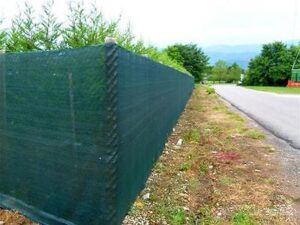
A green shade net installed as a wind break
Our shade nets are green or black in color. The color has no bearing on the net effectiveness, but is rather for aesthetic reasons. Shade nets are supported by steel, or wooden frames for shade houses
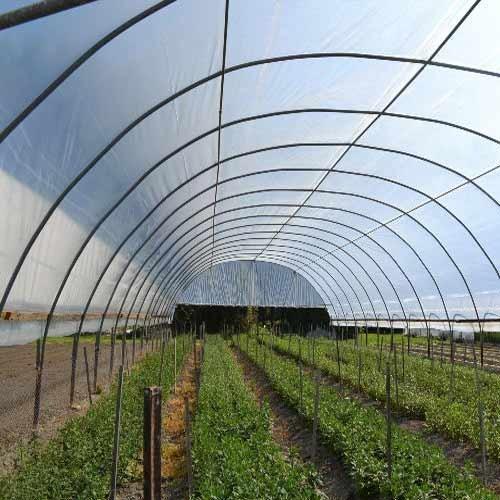
Greenhouse Company In Kenya
Grekkon Limited is the low cost premier greenhouse company in Kenya, known for its galvanised steel tunnel type, and open ventilation type units. We provide affordable greenhouses in Kenya with each unit constructed tailored to the grower’s specifications. There is a choice of wooden or metallic greenhouses from our choice of low cost greenhouse construction in Kenya. All greenhouse sizes unit have a drip irrigation system installed, with water supplied via a HDPE pipe
How To Construct A Greenhouse
- Assessment of the location. Is it high, mid or low altitude? Tunnel type units are for the highlands and cooler areas. Open ventilation type units for the warm mid to coastal locations
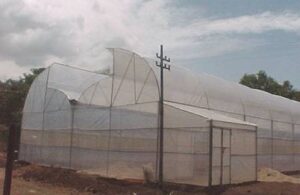
Open ventilation type greenhouse
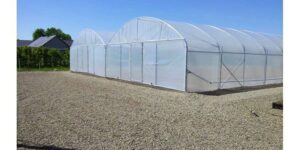
Tunnel type greenhouses
2. Check the land topography, and water availability. This determines the greenhouse location
3. Understand the target crop type.
This informs us if the unit will have an internal crop support system, and how strong it should be. A strawberry greenhouse will need none, but a tomato or pepper unit will. It advises on the greenhouse net to install. Strawberry and tomato will have different nets on the sides
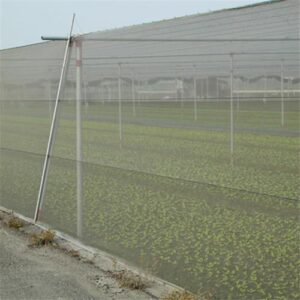
An insect net on the side to keep away pests
4. Material selection.
- Galvanised steel. Galvanisation keeps it from rust
- UV treated greenhouse polythene with anti-drip properties. UV treatment prevents rapid sun degradation, anti- drip treatment prevents dew formation on the paper. Dew drops falling on the crop are a precursor to fungal diseases. It covers the top and sides of a greenhouse structure to protect the plants within from the elements. It allows in the right spectrum of light for crop growth while filtering away the less needed part of light by the crop. All this creates a an internal environment favourable to plant growth regardless of the external environment. This allows for all year production, improves crop yield and quality
- UV treated insect/ bird net. The former keeps away insect pests, while the latter allows in insects for pollination, but prevents entry of bird pests
- Stainless steel profiles and plastic coated wiggle wires hold the greenhouse paper and netting onto the steel frame
As a greenhouse company in Kenya, the above are the key considerations we make when advising growers on the choice of greenhouse units
Greenhouse Prices In Kenya
1. Metallic
| Greenhouse Type | ||||
| Tunnel Type | Open Ventilated Type | |||
| Greenhouse Size | 15M x 8M | 290,000 | 330,000 | |
| 20M x 8M | 300,000 | 340,000 | ||
| 24M x 8M | 320,000 | 350,000 | ||
| 30M x 8M | 460,000 | 540,000 | ||
| 40M x 8M | 575,000 | 655,000 | ||
| 15M x 16M | 460,000 | 555,000 | ||
| 24M x 16M | 620,000 | 665,000 | ||
| 30M x 16M | 900,000 | 990,000 | ||
| 40M x 16M | 1,100,000 | 1,240,000 | ||
2. Wooden
| Dimensions in meters | Tomato Crop Population | Price in KES |
| 15 x 8 | 600 | KES 140,000 |
| 24 x 8 | 800 | KES 160,000 |
| 30 x 8 | 1,200 | KES 190,000 |
| 30 x 16 | 2,500 | KES 370,000 |
How To Construct Timber Greenhouses
i. Know the crop type to plant. This will guide on the greenhouse design and amount of material to use. For instance, a tomato greenhouse will take more material than one with herbs. This is because tomato will require training, and herbs won’t. It also guides on the greenhouse paper to cover with. You will have more light for fruiting crops like tomato, capsicum, chilli, cucumber, and strawberry, or bi/ multicolored flowers. Have a clear polythene for these. Mono-color flowers will have the yellow polythene cover
ii. Determine the plant population you need. This informs the area of the greenhouse
iii. Once you determine the amount of timber required based on the greenhouse area, treat it. This is to prevent weevils and termites from attacking the timber which reduces it’s lifespan. Do not apply motor oil on the timber as treatment. This is because it will contaminate food crops in the greenhouse
iv. Your construction design is the vented type. This is because the wood cannot be curved to a tunnel type design
v. Cover the roof and side ventilation with an insect net. Select the high density gauge which is effective in keeping away white-flies
vi. Make the beds according to the crop type. Beds are important in managing drainage. For seedling production, set up the tables 1M high
vii. Set up the drip irrigation system on the beds. For seedling production, set up he misting or fogging system above. The misters or foggers are 1M apart
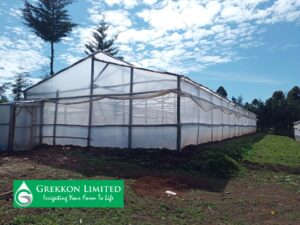
A wooden greenhouse by Grekkon Limited
How to Choose Greenhouse Nets
Greenhouse nets allow for ventilation of the crops, and personnel working in the unit. Below are the consideration made when deciding the choice of greenhouse net to install on the sides
1. Crop type. Some crop types require higher light intensity than others. In this case, a lower shade % net is appropriate for the former. Fruiting crops such as; tomato, strawberry, capsicums, and so on require more light than leafy vegetables. Examples are; cabbage, spinach, collards, kale etc.
2. Crop stage of growth. The shade net in the nursery will block out more heat, than the one for established crops in the field
3. Location of the farm. In the highlands where the heat intensity is less, a lower shade net will protect crops well. In the mid to low altitudes where it’s hotter, a higher shade net works best.
4. Latitude. Countries such as Kenya lie along the equator where solar radiation is high. Your choice of greenhouse net will have higher UV treatment than that of a temperate region

A bird net on a strawberry greenhouse to allow in insects for pollination, while keeping away bird pests
Greenhouse Company In Kenya
FAQs
a. What materials are needed to build a greenhouse?
- UV treated greenhouse polythene
- Steel pipes
- Insect netting
- Profiles and wires
b. Can I grow year-round in a greenhouse?
Yes because the crop is protected from the elements of weather
c. Do greenhouses make money?
Yes they do with a high-value crop
